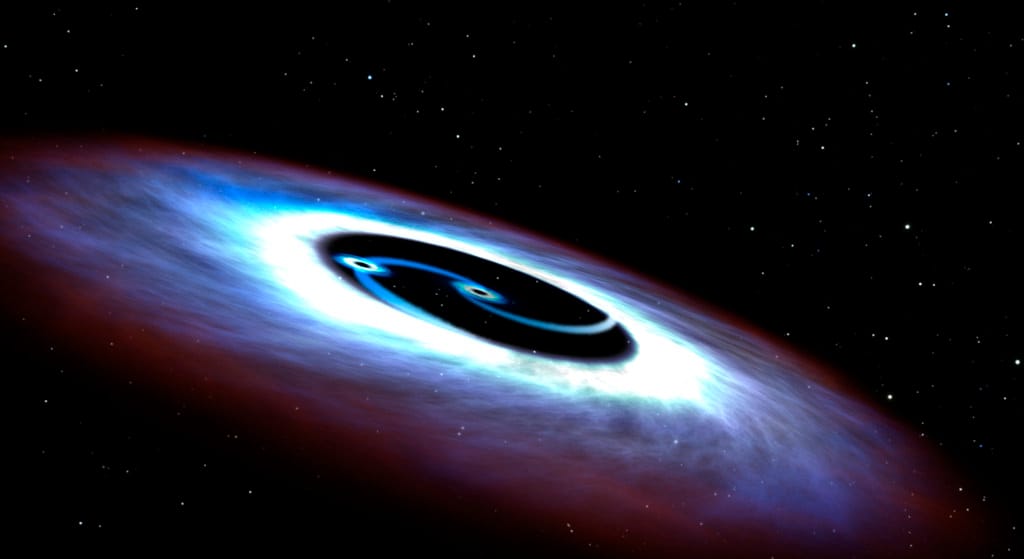LIGO Detects Universe's Most Massive Black Hole Collision Ever Recorded
Scientists at the Laser Interferometer Gravitational-Wave Observatory (LIGO) have achieved another groundbreaking milestone in astrophysics, detecting the most massive black hole merger ever recorded. This cosmic collision, involving two black holes with a combined mass nearly 150 times that of our Sun, has opened new windows into understanding the universe's most extreme phenomena and challenges existing theories about black hole formation.
A Cosmic Collision of Epic Proportions
The detection, catalogued as GW190521, captured the moment when two black holes—weighing approximately 85 and 66 solar masses—spiraled into each other at nearly the speed of light before merging into a single, massive black hole. The resulting behemoth tips the scales at roughly 142 solar masses, with the equivalent of about 8 solar masses converted into pure energy and released as gravitational waves.
What makes this discovery particularly remarkable is its location in what scientists call the "mass gap"—a theoretical range where black holes were not expected to exist. This finding challenges our fundamental understanding of stellar evolution and black hole formation mechanisms.
Breaking the Silence of Space
Gravitational waves, first predicted by Einstein over a century ago, are ripples in the fabric of spacetime itself. When these waves from GW190521 reached Earth after traveling for approximately 7 billion years, they caused the most sensitive detectors ever built to move by a distance smaller than 1/10,000th the width of a proton.
Dr. Kip Thorne, LIGO co-founder and Nobel laureate, described the detection as "hearing the universe's most violent events." The signal lasted only about one-tenth of a second, but contained information about one of the most energetic events ever observed in the cosmos.
Unprecedented Scale and Implications
This merger stands out not just for its mass, but for what it reveals about the universe's hidden population of black holes. The 85-solar-mass black hole falls into a range that conventional stellar evolution theory suggests should be impossible to create through normal star collapse.
Current models predict that stars massive enough to create such black holes would undergo a process called pair-instability supernova, completely destroying themselves rather than leaving behind a black hole. This suggests that the detected black holes may have formed through alternative mechanisms, possibly involving multiple generations of black hole mergers or exotic formation processes in the early universe.
Technological Marvel Behind the Discovery
The detection required the unprecedented sensitivity of LIGO's Advanced detectors, which can measure changes in distance equivalent to detecting a human hair at a distance of 4 light-years. The observatory uses laser interferometry, where gravitational waves stretch and compress the space between mirrors suspended 4 kilometers apart.
The GW190521 signal was detected simultaneously by both LIGO detectors in Louisiana and Washington, along with the Virgo detector in Italy, allowing scientists to triangulate the source's approximate location and confirm the authenticity of the signal.
Opening New Frontiers
This discovery represents more than just another detection—it's reshaping our understanding of black hole populations in the universe. The merger suggests that intermediate-mass black holes, weighing between 100 and 100,000 solar masses, may be more common than previously thought and could serve as seeds for the supermassive black holes found at the centers of galaxies.
The detection also provides new insights into the rate of black hole mergers in the universe and the processes that drive galaxy formation and evolution. Each gravitational wave detection adds another piece to the puzzle of cosmic history, helping scientists understand how the universe's most massive objects formed and evolved.
The Future of Gravitational Wave Astronomy
As LIGO continues its observations alongside partner detectors worldwide, scientists expect to detect dozens more black hole mergers annually. Each detection provides unique insights into fundamental physics, from testing Einstein's general relativity in extreme environments to understanding the equation of state of matter under unimaginable pressures.
The GW190521 detection marks a new chapter in gravitational wave astronomy, proving that the universe still holds surprises that challenge our deepest theories about cosmic evolution. As we continue to listen to these cosmic whispers, we're not just detecting distant events—we're witnessing the universe's most violent moments and understanding our place within this vast, dynamic cosmos.
